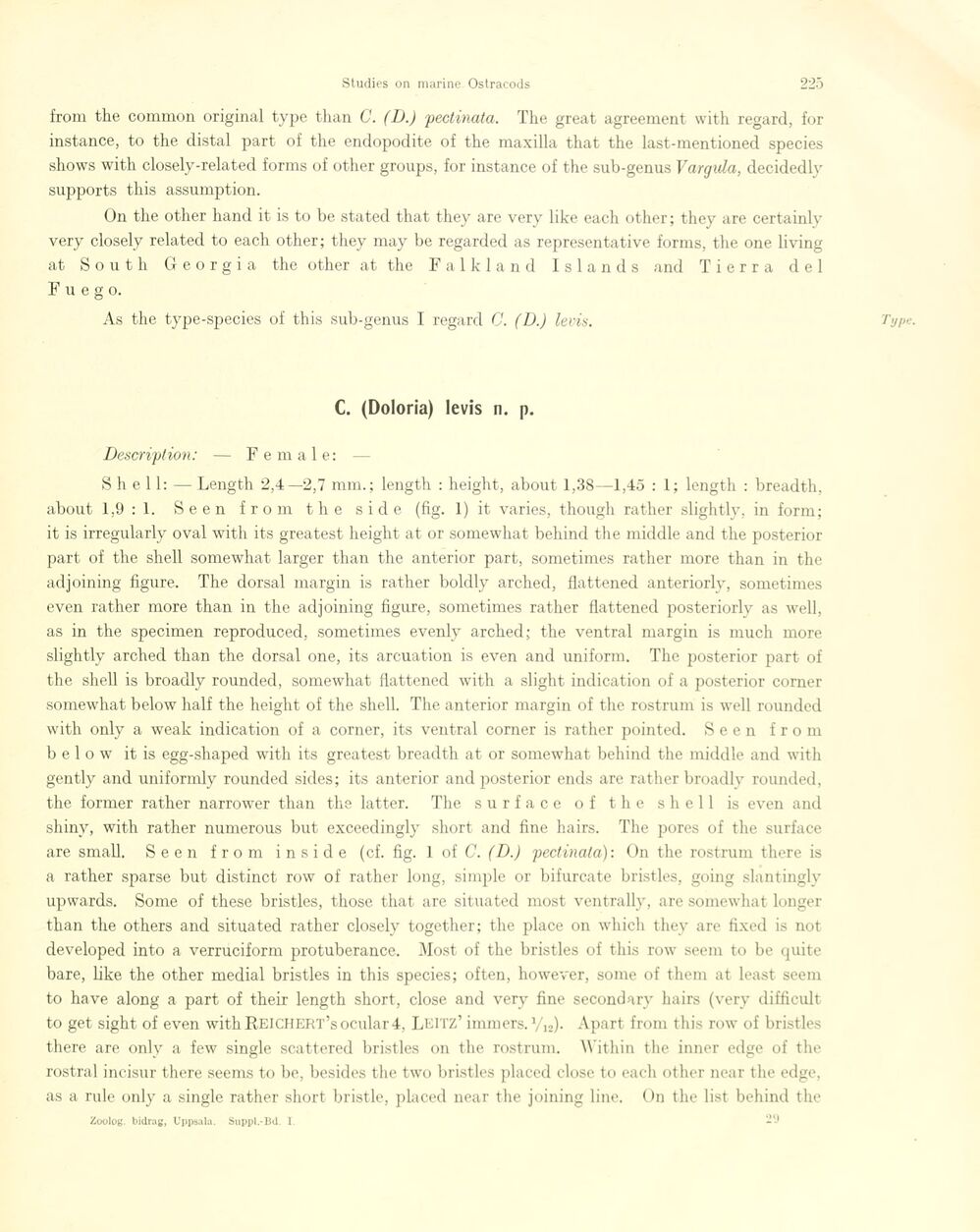
Full resolution (JPEG) - On this page / på denna sida - Sidor ...

<< prev. page << föreg. sida << >> nästa sida >> next page >>
Below is the raw OCR text
from the above scanned image.
Do you see an error? Proofread the page now!
Här nedan syns maskintolkade texten från faksimilbilden ovan.
Ser du något fel? Korrekturläs sidan nu!
This page has never been proofread. / Denna sida har aldrig korrekturlästs.
from the common original type than C. (D.) pectinata, The great agreement with regard, for
instance, to the distal part of the endopodite of the maxilla that the last-mentioned species
shows with closely-related forms of other groups, for instance of the sub-genus Vargula, decidedlv
supports this assumption.
On the other hand it is to be stated that they are very like each other; they are certainly
very closely related to each other; they may be regard ed as representative forms, the one living
at South Georgia the other at the F a 1 k 1 a n d Islands and T i e r r a del
F u e g o.
As the type-species of this sub-genus I regard C. (D.) levis.
C. (Doloria) levis n. p.
Description: — F e m a 1 e:
Shell: — Length 2,4—2,7 mm.; length : height, about 1,38—1,45 : 1; length : breadth.
about 1,9 : 1. Seen from the side (fig. 1) it varies, though rather slightly, in form;
it is irregularly oval with its greatest height at or somewhat behind the middle and the posterior
part of the shell somewhat larger than the anterior part, sometimes rather more than in the
adjoining figure. The dorsal margin is rather boldly arched, flattened anteriorly, sometimes
even rather more than in the adjoining figure, sometimes rather flattened posteriorly as well,
as in the specimen reproduced, sometimes evenly arched; the ventral margin is much more
slightly arched than the dorsal one, its arcuation is even and uniform. The posterior part of
the shell is broadly rounded, somewhat flattened with a slight indication of a posterior comer
somewhat below half the height of the shell. The anterior margin of the rostrum is well rounded
with only a weak indication of a corner, its ventral corner is rather pointed. Seen from
below it is egg-shaped with its greatest breadth at or somewhat behind the middle and with
gently and uniformly rounded sides; its anterior and posterior ends are rather broadly rounded,
the former rather narrow^er than the latter. The surface of the shell is even and
shiny, with rather numerous but exceedingly short and fine hairs. The pores of the surface
are small. Seen from inside (cf. fig. 1 of C. (D.) pectinata): On the rostrum there is
a rather sparse but distinct row of rather long, simple or bifurcate bristles, going slantingly
upwards. Some of these bristles, those that are situated most ventrally, are somewhat longer
than the others and situated rather closely together; the place on wliich they are fixed is not
developed into a verruciform protubérance. Most of the bristles of this row seem to be quite
bare, like the other medial bristles in this species; often, however, some of them at least seem
to have along a part of their length short, close and very fine secondary hairs (very difficult
to get sight of even withREICHERT’socular4, Leitz’ immers. y12). Apart from this row of bristles
there are only a few single scattered bristles on the rostrum. M ithin the inner edge of the
rostral incisur there seems to be, besides the two bristles placed dose to each other near the edge,
as a rule only a single rather short bristle, placed near the joining line. On the list behind the
Zoolog, bidrag, Uppsala. Suppl.*Bd. I. -‘J
Type.
<< prev. page << föreg. sida << >> nästa sida >> next page >>